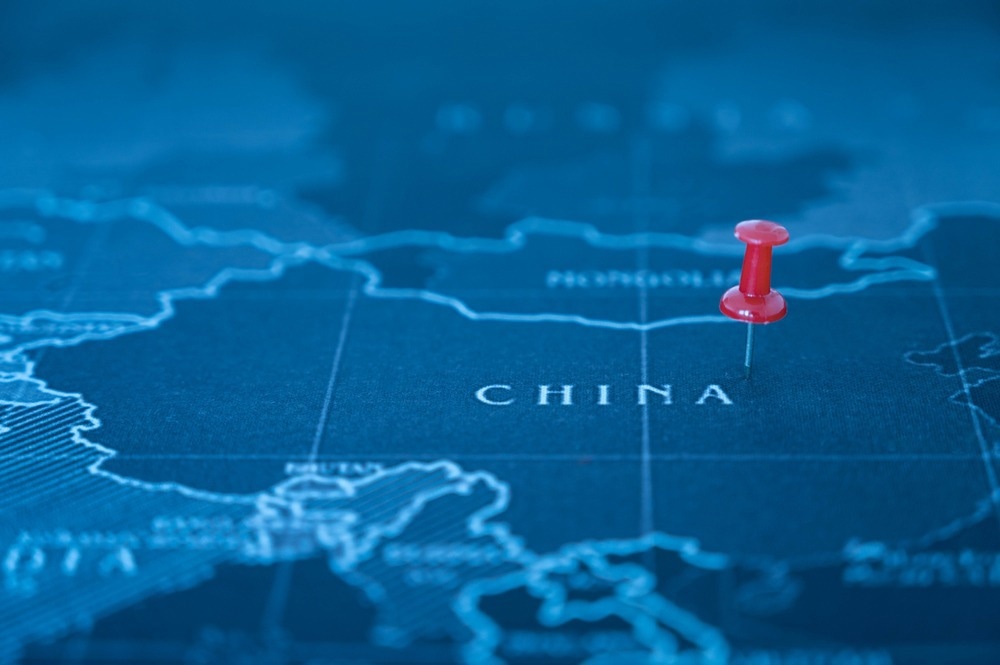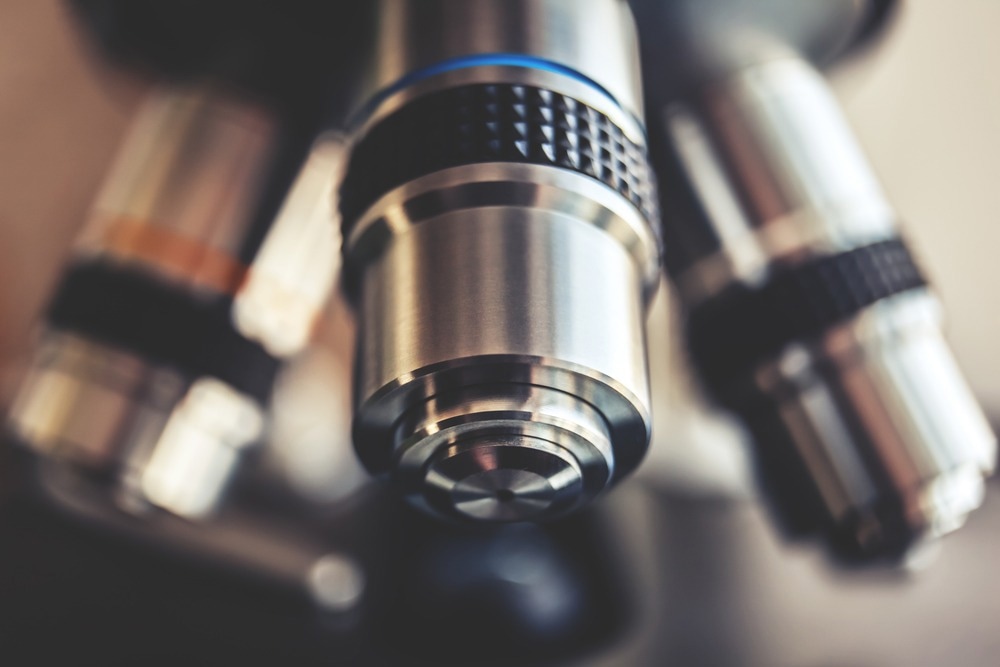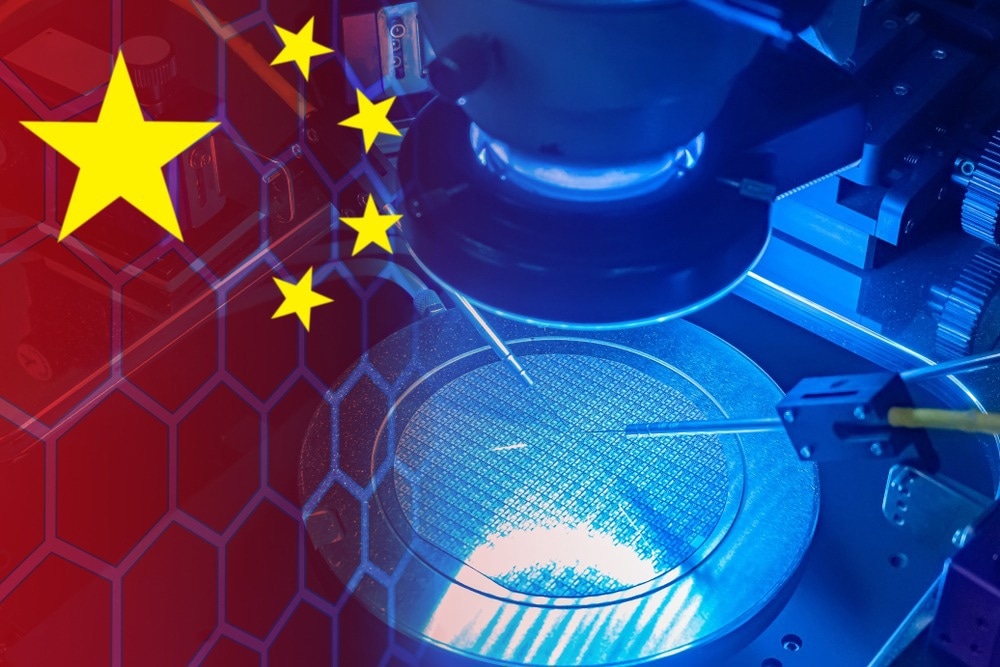China is located in Eastern Asia and covers a total area of 9,706,961 km2, making it the 4th largest country in the world. In this article, AZoNano discusses the current state of the nanotechnology market in China.
China’s Market Landscape
In 2022, China had a population of 1.426 billion, making it the most populous nation in the world, although India is expected to take this title in 2023.
China’s imports include organic chemicals, oil and mineral fuels, medical and optical equipment, plastics, metal ores, and electrical and other machinery. The country’s exports include data processing equipment, textiles, optical and medical equipment, steel, iron, apparel, and other machinery.
The key to China's economic success is the fact that the country is a low-cost producer. This is attributed to a combination of good infrastructure, cheap labor, high productivity, an undervalued exchange rate, and favorable government policies.
However, in the near future, China will face the challenge of finding new growth drivers, given that structural constraints over the past few years have placed limitations on investment returns and have initiated a declining workforce and productivity rate.

Image Credit: pskamn/Shutterstock.com
China is also, notably, a key region for advancement in nanoscience and nanotechnology. A recent report in Small Wars Journal identified China as the world’s leader in nanotechnology startups. The country is also home to numerous important educational institutions and companies contributing to the development of the nanotechnology sector.
Nanotechnology Organizations in China
A brief introduction to the prominent nanotechnology-related organizations in China is given below:
Suzhou Nanotech
Suzhou Nanotech aims to establish industries and talents that represent China’s advancements in nanotechnology. This is achieved by providing services, infrastructure, an investment environment and a suitable platform to promote nanotech industrialization and innovation in China.
CHINano Summit
CHINano Summit, organized by various forums and organizations, focuses on introducing cutting-edge nanotechnology and its future applications. It allows entrepreneurs, scientists and business executives to discuss new technology trends and their applications, along with an emphasis on nanotech commercialization.
The major nanotechnology-related companies in China are listed below, along with a brief introduction to their activities:
Arry
Arry Nano is a professional supplier of a wide variety of nanomaterials, ranging in quantities from grams to tons, suited to academic research purposes or industrial development. Their representative products are carbon nanotubes (CNTs) and nanoelements, as well as nanooxides (rare earth, metal and non-metal).
They have carried out a lot of research and development work on carbon nanotubes synthesis and their applications. Furthermore, they have ten years’ experience in developing a scalable CVD method to produce high purity, single-walled carbon nanotubes (SWNTs) and multi-walled carbon nanotubes (MWNTs) with various diameters, narrow-diameter distributions and very low purity.
Nano Powder R&D Center is involved in the frontal research and development of nanomaterials and belongs to Chengdu Alpha Nano Technology Co., Ltd. They are committed to supplying their customers with high-quality CNTs at low prices. They cater to independent researchers or large-volume users of CNTs and welcome all kinds of collaboration to develop CNT production and applications.
Timesnano is a professional CNT manufacturer and the exclusive CNT provider to the Chinese Academy of Sciences (CAS). Since 1996, they have been committed to CNT synthesis and application research and began to commercialize CNTs in 2003. They can provide hundreds of different kinds of CNTs and related products. Their equipment can produce 100kg of an SWNT with a purity >90%, and 30t of an MWNT with OD 20-30nm and a purity >95%. These products have earned a good reputation worldwide. The company invented moving-bed catalysis technology for CNTs, enabling continuous production and can produce CNTs with high purity, low cost and consistent quality.
This company is a high-tech enterprise focusing on research and development of nanomaterials and microsphere products. They have cooperated closely and steadily with well-known research universities, national laboratories, and innovative corporate giants in China. They are one of the largest high-tech factories in the field of preparing nanocomposites, metal nanoparticles, alloy nanoparticles, oxide nanoparticles, rare earth oxide nanoparticles, nanocomposites, and microspheres products. They are successful because they are committed to providing the highest quality products with the most competitive price for their customers and have formed a complete cycle of researching, manufacturing, marketing, and aftersales servicing.
Since 1958, FCC ®INC has been a division of Sino-Holding Chemicals Co.,Ltd., located in Zhejiang, China. The company is an ISO-9001:2008 and ISO14001 registered advanced high-technology enterprise engaged in research, development, manufacture and supply specialty chemicals including organoclay, organoclay rheological additives (organic bentonite thixotropic agent ), nanoclay, nanocalcium carbonate, carbon nanofibers, nanographite, bleaching earth, oil drilling fluid viscosifier, cat litter, synthetic hectorite, synthetic hydrotalcite, polyamide wax, PE wax, modified nonionic cellulose ethers based rheological additive/rheology modifiers and environmental chemicals.
Haizisi Nano Technology
Suzhou Haizisi (HZS) Photoelectricity Technology CO., LTD is a high-tech company that specializes in system solutions for nano-detection, nanofabrication, and nanometrology. With almost 20 years of technology experience, HZS is dedicated to SPM research, manufacturing and services.
Hefei Kaier Nanometer Energy and Technology Ltd
Hefei Kaier Nanometer Energy & Technology Co., Ltd is a non-governmental and state-private enterprise, renamed in April 2009 from Hefei Kaier Nano-Meter Technology & Development Co., Ltd founded in 1999. The company is engaged in the research and manufacture of nanoceramic powder and other related downstream products. Their products are exported to the U.S, the EU, Japan and Korea, amongst others.
Nano Medtech
Nano Medtech aims to provide excellent guidance in the engineering of “complete body system” biotechnology. At Nano Med Tech they have engineered polylactic-co-glycolic acid (PLGA) immuno-nanoparticles, specifically for targeting invasive epithelial tumor cells.
Sun Nanotech
Sun Nanotech is a leading supplier of CNTs to the world market. They provide facilities that include CVD furnaces. Their products can be used in a wide variety of application areas.
TiPE is the leading nano photocatalyst manufacturer in China and also owns advanced Nano-hydrosynthetic™ technology. TiPE™ is also the largest hydrosynthetic photocatalyst manufacturer in China. They are the certified nano advanced material manufacturer approved by STCSM (Science & Technology Commission of Shanghai Municipality). They hold advanced core technologies in the nano photocatalyst field and are constantly improving their competitive strength. Their vision is to improve human life with nanotechnology.
The company possesses two product lines of nanoproducts - consumer nano photocatalyst products and professional nano photocatalyst products. TiPE™ has the most diversified products in the photocatalyst field. They focus on mature manufacturer technologies to contribute to high-quality products.
XP Nano
Since 1998, XP Nano Material Co. Ltd has been the earliest high-tech enterprise involved in nanomaterials development and production. Relying on independent intellectual property rights of nanotechnology, XP-Nano took the lead in realizing the industrialization of carbon nanotubes, graphene, and nanopowders.
XP-Nano has successfully devised a process suited to the production of bulk quantities of a wide variety of different nanoscale powders of the highest quality at affordable prices. They produce mainly nanometals and related nanomaterials for electronic, chemical, clean energy, biological, and powder metallurgical applications. Currently, they supply nanometals, such as nanosilver, nanocopper, nanonickel, nanotin, and nanoindium, etc. They also produce nanooxides and other compounds such as carbides, nitrides, borides, and nano NiO, Ni(OH)2, nano Cu2O, nano CoO, nano ZnO, In2O3 and nano SnO2 using their nanotechnology.

Image Credit: freedarst/Shutterstock.com
Nanotechnology Education and Research
Some of the leading academic institutes in China offer courses and research programs in nanoscience and nanotechnology, and are listed below:
University of Chinese Academy of Sciences (CAS)
Ranked second place in the world Nanoscience and Nanotechnology, CAS is a prominent academic institution for nanotechnology globally, not only in China. It is home to the National Center for Nanoscience and Technology, China (NCNST). In October 2015, CAS also established the Center for Excellence in Nanoscience (CAS-CENano), which aims to facilitate the development of a new model for scientific research. The center plans to encourage innovative talent and achieve major breakthroughs in the field of nanoscience.
Soochow University
Promotes the significance of nanotechnology through the Functional Nano & Soft Materials Laboratory. This laboratory concentrates on innovative research and technology development of functional nano and soft materials. Fundamental and applied research activities are carried out in an interdisciplinary manner on molecular design and synthesis of functional nano and soft materials; nano biosensing and detecting technology; organic optoelectronic materials and devices; and the physics and characteristics of soft materials.
University of Science and Technology of China
Promotes interdisciplinary research through the Deng Research Group, which conducts interdisciplinary research, including analytical and physical aspects of bionanotechnology, chemistry, and materials science. This group aims to manufacture functional nanosystems and utilize electrochemical approaches and bio-inspired processes to develop new tools for nanotechnological applications.
Peking University
Peking University pioneers nanotechnology research in China. The university’s Center for Nanoscale Science and Technology (CNST), which opened in 1997, was chosen to be supported by China’s Ministry of Education fund in 2006. According to US News, it is ranked 8th in the world in terms of the best universities for nanoscience and nanotechnology.
National Center for Nanoscience and Technology
Promotes nanotechnology-based research through the research divisions listed below:
- Laboratory for Nanomaterials
- Nanofabrication Laboratory
- Laboratory for Nanodevices
- The Testing Laboratory for Nanostructures
- Laboratory for Biological Effects of Nanomaterials and Nanosafety
- Laboratory for Nanostandardization
- Laboratory for Nanomanufacture and Applications
- Laboratory for Nanocharacterization
Suzhou Institute of Nano-Tech and Nano-Bionics (SINANO)
Conducts research in the field of nanotechnology through the following research divisions:
- Division of Nano-devices and Materials
- Division of Nanobiomedicine Research
- Division of System Integration & IC Design
- Division of Interdisciplinary Research
- International Laboratory for Adaptive Bio-nanotechnology
- Printable Electronics Research Center
- Nanobionic Research Division
Nanotechnology in China: Research Highlights
In February 2015, Chinese researchers achieved a major breakthrough in nanocarrier drugs for pancreatic cancer. The new multi-layer hybrid nanocarrier developed by the research team achieves the layered carrying of three active pharmaceutical agents. The new nanocarrier bridges the technology gap for the application of a nanocarrier as part of multi-drug treatment of pancreatic cancer. The nanocarrier also significantly improves tumor targeting and the effectiveness of the drug while reducing its toxicities. The research findings have been published in the journal Advanced Functional Materials.
Researchers from Fudan University invented a nanolithium titanate material with high electronic conductivity. This material is highly suited to improving the safety of lithium-ion batteries and is also suitable for usage in solar and wind energy road lights whose lithium batteries need to be replaced every 15 years, unlike the conventional lithium-ion batteries that need to be changed after every two years.
Chinese researchers from the Inner Mongolia University of Technology have analyzed ‘nano-scale deformation of a crack tip’. Through this study, researchers analyzed nanoscale deformation fields of crack-tips and in turn, developed a new method to analyze the deformation of crack-tips at a very small scale.
Chinese researchers contributed to a paper that reveals how the dynamic lithiation process of anode materials such as SnO2 nanowires takes place, using aberration-corrected scanning transmission electron microscopy. This new study provides a new level of understanding of the lithium-ion battery industry.
Recently, in 2020, an international team led by Chinese scientists succeeded in developing a novel synthetic and biodegradable nanoparticle. The innovation will facilitate further developments in CRISPR-Cas9 gene-editing technology, and may help to establish new treatments for genetic-based disorders including cancer.
Also in 2020, researchers at China’s State Key Laboratory of Robotics produced a laser that generates a small gas bubble that can be utilized as a nanorobot, designed to move materials at the nanoscale. The precision offered by this ‘bubble bot’ lends itself to developments in the field of cloning and artificial tissue creation.

Image Credit: FOTOGRIN/Shutterstock.com
Nanotechnology in China: The Future
Between 2000 and 2019, China was responsible for almost one-third (29%) of the growth in global research and development. In 2021, China’s annual spending on research and development reached a new high of 2.44% of its GDP. This was an increase of 0.03% on 2020’s spending. China’s investment and infrastructure for research has put it in an advantageous position for fueling nanotechnology research.
China’s open-door policy has helped attract foreign investment, including capital and technologies. This has also encouraged international collaboration which has no doubt helped accelerate technological development, providing access to foreign expertise and infrastructure.
China also has a medium and long-term plan for science and technology which provides a blueprint for their conversion to an innovation-driven economy by 2020.
There is no doubt that China is very active in the area of scientific development and nanotechnology. Their willingness to embrace collaboration, the large number of researchers and a commitment to a knowledge-based economy is expected to cement China as a leading country for nanotechnology research.
Already, research conducted in China has been successful in achieving nanotechnology breakthroughs that will be significant in numerous fields, from cancer research and cloning to space exploration. China’s success in nanotechnology is raising the bar for other competing countries worldwide.
References and Further Reading
Best Global Universities for Nanoscience and Nanotechnology [online]. US News. Available from: https://www.usnews.com/education/best-global-universities/nanoscience-nanotechnology
Colin Schultz. 2013. Gold Nanoparticles May Be the Future of Male Contraception [online]. The Smithsonian Magazine. Available from: https://www.smithsonianmag.com/smart-news/gold-nanoparticles-may-be-the-future-of-male-contraception-99004732/
Conrad Hackett. 2022. Global population projected to exceed 8 billion in 2022; half live in just seven countries [online]. Pew Research. Available from: https://www.pewresearch.org/fact-tank/2022/07/21/global-population-projected-to-exceed-8-billion-in-2022-half-live-in-just-seven-countries/
Dr. Mahbube K. Siddiki (2022). China as the World Leader in Nanotechnology: Another Wakeup Call for the West [online]. Small Wars Journal. Available from: https://smallwarsjournal.com/jrnl/art/china-world-leader-nanotechnology-another-wakeup-call-west
Laura Silver and Christine Huang. 2022. Key facts about China’s declining population [online]. Pew Research. Available from: https://www.pewresearch.org/fact-tank/2022/12/05/key-facts-about-chinas-declining-population/
Nie, A. et al. (2013) “Atomic-scale observation of lithiation reaction front in nanoscale sno2 materials,” ACS Nano, 7(7), pp. 6203–6211. Available at: https://doi.org/10.1021/nn402125e.
The World Bank In China [online]. The World Bank. Available from: https://www.worldbank.org/en/country/china/overview
Wang, J. et al. (2013) “Forced Assembly of water-dispersible carbon nanotubes trapped in paper for cheap gas sensors,” Small, 9(22), pp. 3759–3764. Available at: https://doi.org/10.1002/smll.201300655.
Li, F. et al. (2014) ‘Multiple layer-by-layer lipid-polymer hybrid nanoparticles for improved FOLFIRINOX chemotherapy in pancreatic tumor models’, Advanced Functional Materials, 25(5), pp. 788–798. doi:10.1002/adfm.201401583.
This article was updated June 2023.